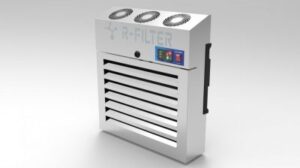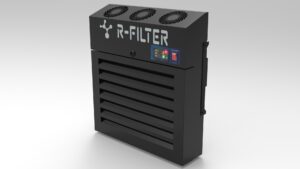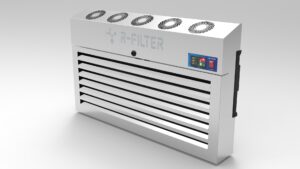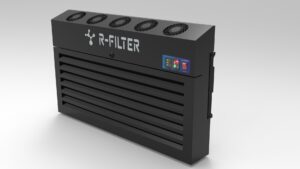UVE PHOTOCATALYTIC DISINFECTION AND DEODORIZER DEVICE
The device was developed for the disinfection and deodorization of heavily used public areas.
Communal areas, offices, medical waiting rooms, food and other commercial shops, restaurants, hotels, laboratories, smoking rooms and toilet facilities.
The device can be used wherever harmful viruses and bacteria and unpleasant odors are to be eliminated. There is a synergistic effect of UVGI (Ultraviolet Germicidal Irradiation) and PCO (PhotoCatalytic Irridation) used in the device. It's up to you to decide whether you want to take advantage of odor removal or disinfection, or both of them, to achieve your air purification goals.
Photocatalysis takes place under normal temperature and humidity conditions, no special operating conditions are required.
The device can be mounted on a wall or on a stand.
Functional principle
It is well known that surfaces coated with nano-TiO2 show self-cleaning activities under the influence of sunlight. Titanium dioxide coated surfaces are used also as a photocatalyst in our wall mounted model, but they are illuminated with ultraviolet light here. In the air purifying device, there is a synergistic effect of two technologies.
PCO (PhotoCatalytic Oxidation):
The indoor air circulated by the built-in fans flows through the device in contact with the photocatalyst plates. The plates are excited by UV light, whereupon the catalyst surfaces are activated and produce highly reactive hydroxyl radicals and superoxide ions on their surfaces. The resulting radicals attack the air pollutants like most organic pollutants (bacteria, viruses, mold and odors) and destroy them through oxidation.
UVGI (Ultraviolet Germicidal Irradiation)
The applied germicidal lamp is a special UV-C light source. The short-wavelength ultraviolet light in the UV-reactor chamber kill or inactivate microorganisms by disrupting their DNA and RNA. The applied UV light is used also to activate the photocatalyst.
The following air purification process takes place on the surface coated with TiO2:
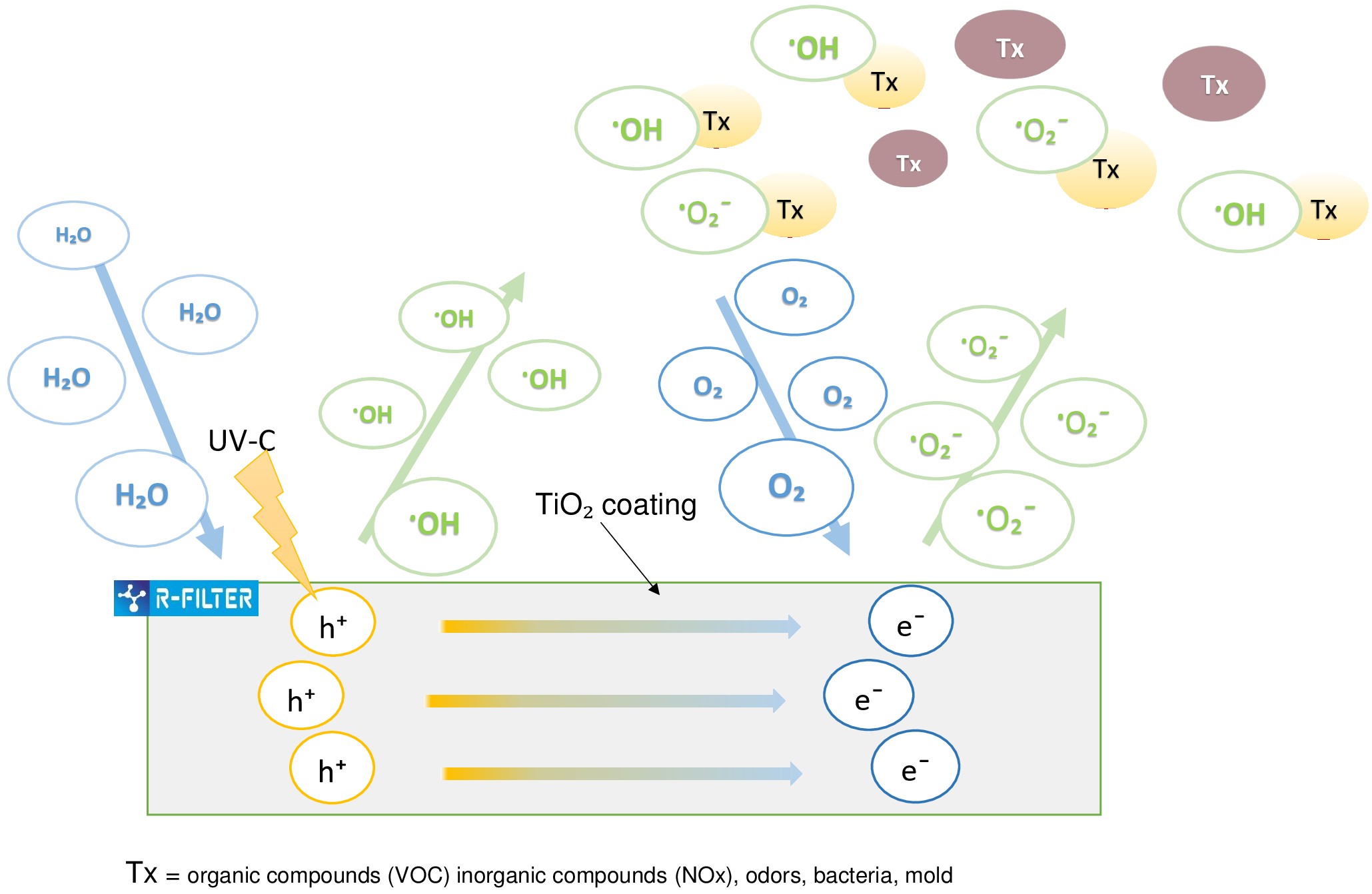
The above coating is a semiconductor and when light of a certain wavelength strikes the surface of the titanium dioxide, electrons (e–) are transferred from the valence band to the conduction band. At the same time, electron holes (h+) are formed in the valence band. The holes oxidize strongly, while the electrons have a strong reducing effect. From the water arise highly reactive hydroxyl radicals (·OH) and from the atmospheric oxygen reactive superoxide radicals (·O₂ˉ). As a result, the pollutants are decomposed. The ultraviolet rays change the DNA structure of microorganisms and cause their destruction. Microbes and organics will be mineralized to water and carbon dioxide which is removed with the purified air. The TiO₂ coating does not wear out and remains permanently functional.
In a "cross-sectional" picture, the decomposition process of volatile organic compounds (VOCs):
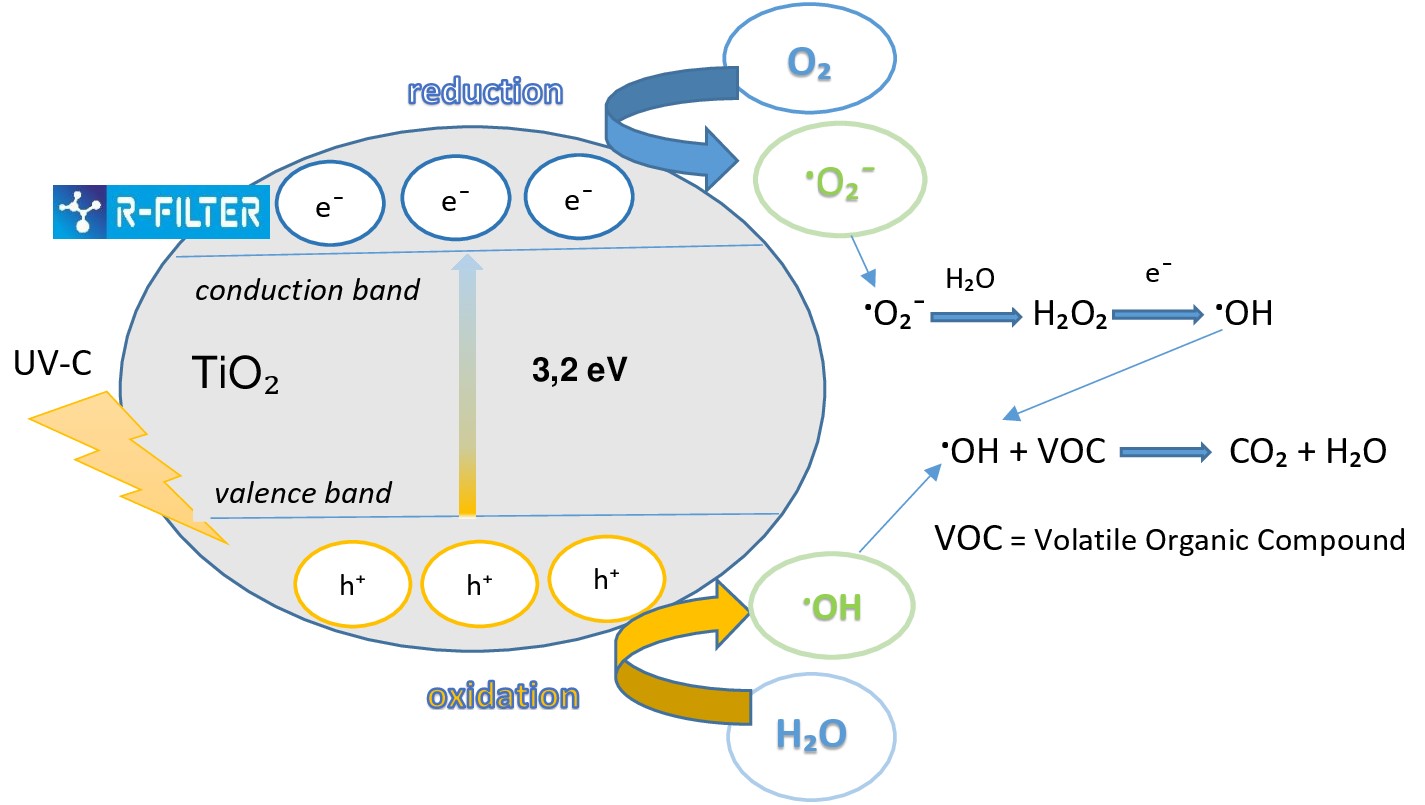
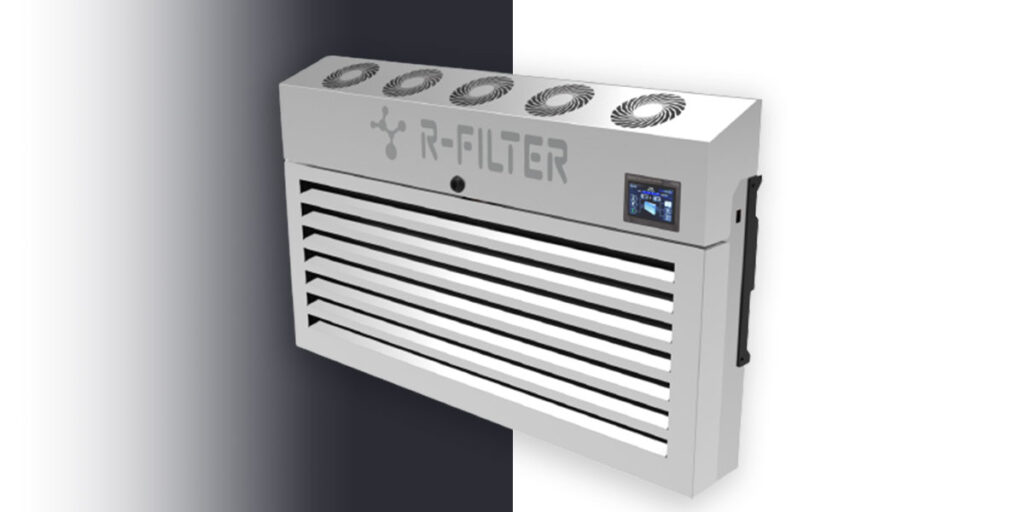
Features, benefits:
- Synergistic effect of dual process (UVGI and PCO)
- Kills bacteria and viruses
- Odor control
- Does not contain any filter
- Works without chemicals
- Environmentally friendly
- Low energy costs, programmable cycle times
- Stainless steel housing, no risk of corrosion
- Minimal maintenance effort
- Easy installation
On request, we will send you device data sheets after registration under the menu item "Contact".
